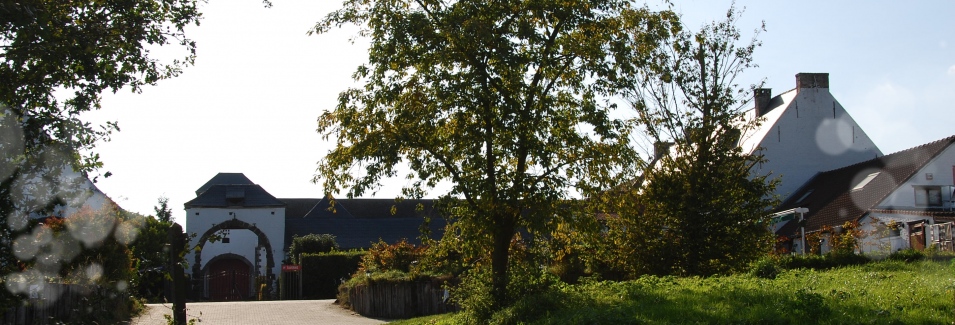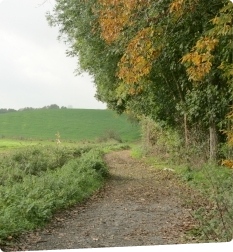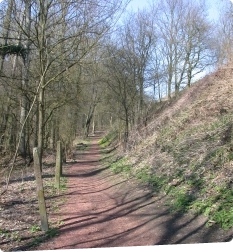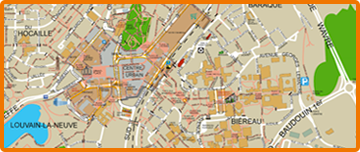

Contact
us

Discovery tour
Newsletter
Get tourist news on Ottignies-Louvain-la-Neuve


Walk from Petit Ry to Buston
Promenade No. 3: Petit-Ry - Buston
1. Boisette
At the back of the church, go to the right. Travel approximately 400 m between the villas of Avenue Van de Walle. At the rotary, go one hundred meters to the left on Rue de Pinchart. Take the small trail just before the Boisette Woods which surround the Boisette castle and district. This area was one of the last to be cultivated in the last century.
2. View of the hamlet of Puits
On following the path, we are led between the fields towards the hamlet of Puits. This old connecting route is located in the middle of an agricultural area and offers open views of Puits, Céroux… At the first crossroad, take a right to find the Pinchart valley.
3. Chapel of Our Lady of Lourdes
After crossing Rue de Pinchart, an important connection route, one is led towards Rue des Prairies. On the left, before the descent of the paved path, there is the small chapel of Our Lady of Lourdes.
4. Watercress beds of Rue des Prairies
On the slopes of the small valley molded by the Pinchart, a second category river leading from the Province of Walloon Brabant, one will note the presence of ash trees, broom, glutinous alders… At the bridge, enjoy a view of the valley. On the right, an old watercress bed, today abandoned, is recolonized by humid area plants: large heracleum, epilobium, horsetail, willow… After the Pinchart, travel 200 m to Rue des Vergers. At the junction, take a right. Attention, at the intersection 150 m further along, stay on Rue des Vergers.
5. The slopes of Rue des Vergers
Decorated with sessile oaks, late cherry trees, yellow birch, black elder trees, hawthorns and spindle-trees, this corner opens to Rue de Charnois. Take a right towards Rue Léon Dekaise.
6. Commemorative monument on Rue Léon Dekaise
After the monument erected in honor of a military officer killed locally in combat at the corner of Rue de l’Escadron Brumagne, travel 200 m on Rue Léon Dekaise before taking Drève des Volontaires (just before the railroad bridge).
7. Drève des Volontaires Woods
This small drive winds between the railroad line and woods made up of poplars, willows and alders. One also notes the presence of ash trees, red American oaks and hops. At the end of the woods, cross the Pinchart to come right to the entrance of the Buston Woods.
8. Woods of Buston
These community woods of approximately 5 ha, located in an urban area, constitutes a living space for a colony of arboreal bats (in summer), several gray wagtails as well as Russian frogs. Before returning towards the Pinchart by taking Rue du Moulin à Eau, take a look around!
9. The old water mill
By following Rue du Moulin à Eau, pass before the old goblet mill of Limelette, of which the buildings date back to 1752. 50 meters further along, go towards the Ry Valley Floor on the left.
10. Willows of the Ry Valley Floors
In the meadow between the Ry Valley Floor and the Pinchart, ther are several old pruned, tied willows. This tree is well known for its therapeutic properties (salicylic acid is the basis for aspirin) and remains used today by rabbit breeders who regularly use branches in their hutches.
11. The humid area of the Ry Valley Floor
This area, where several sources are born, offers a biotope with a particular flora and fauna. Meadowsweet blooms here from June to September. In the spring, orchids can be admired. The latere planted here by Cistercian monks who lived at the Balbrire farm is also present. This plant is very rare in Belgium, a parasite of poplars and alders and only grows along the streams. The goldfinch, alder conk, reed bunting, chiffchaff warbler, black redstart and chickadee are encountered here often.
12. The pond of the Ry Valley Floor (PRIVATE!)
Before turning left on Chemin de Lasne, there is a beautiful pond behind some elms. Supplied by sources, it was once the official water reserve for the mill located below. Today, it is an egg-laying area for green frogs.
13. The humid areas of Chemin de Lasne
Climbing the Pinchart towards the Balbrire farm, there are several humid area plants, particularly the swamp thistle, an ornamental type of thistle and the bird cabaret which really proves its name.
14. Balbrire Farm
Here is the beautiful Balbrire Farm (18th century), of which the name recalls the presence of briars that were ripped up during the reign of Marie-Thérèse of Austria. Make a left towards Rue du Corbeau. The small Balbrire valley, with its groves, ponds and tree alignments is a large landscape interest. On the right, note the presence of a few old dead trees. These trees often present natural cavities that owls use for nesting. The preservation of an old tree is also used for the survival of others species: chickadees, redstarts, woodpeckers, tree creepers, bats, insects and small mammals.
15. Sandpit of Corbeau
Arriving at Rue du Corbeau, make a right on a small, heavily wooded trail to find our base. This sandpit hasn’t been used for twenty years. Today, it is the subject of a partial stowing.
The Buston Woods, lengthwise and breadthwise
A path was created to allow visitors to go around the woods and discover the three areas that it is made up of.
The low area, on the right, is occupied by a succession of ponds. The lower pond, easily visible from the entrance of the woods, is used for fishing. Bordered with reeds, irises, some alders and willows, it presents an interesting landscape.
Travelling along the fence upwards, one discovers the second area located in the upper section. Made up of a massive wood of elms, alders, ashes, red American oaks, poplars and sycamore maples, this area has suffered a lot over the course of the past 50 years. To bring life back to the woods, a regrowth selection (sprouts that grow on ancient parent colonies) has been in progress for two years. In the spring, one can admire the colored carpets of sylvie anemones.
By descending along the Pinsons Orchard, one travels along a very interesting humid area that is not very visible and difficult to access. The maintenance of the “wild” character, and notably of the shrub belt, aims to limit passage towards the sedge meadow (marshy), and insures the tranquility of the fauna and flora that develop there.







